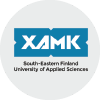MATERIAL Flow
(understanding the supply-chain)
Supply chain, network activities which, integrated, deliver a product or service to the consumer, are essencial for a functioning business. It can be the main strategic force between competing companies with similar consumers, and it should work fluidly (just like the blood in your veins).
The New Cotton Project is an European Union funded project which aims to implement a commercial scale garment production with a cellulose fibre laboratory-developed technique, transforming post-consumer textile waste into new fibres.
Part one of the ‘Interactive ecosystem for circular textiles’ introduces the student to a simple comparison between the supply-chain stages of the ‘new cotton’ and that of the traditional industry, also presenting other activities within the partnering companies as examples of other activities found in the supply-chain.
Expected time dedication: 1 hour
(only map, without further reading).
Use desktop devices for best experience.
Understanding how the course works
Don’t be discouraged if you initially think the material is too complicated, we have prepared a video to assist you in getting used to the course and at the bottom of this page you can find the course’s syllabus.
Post-consumer waste
Post-consumer textile waste represents clothes, fabrics and other textiles used and disposed of by the final stakeholder of the supply chain (the consumer).
Within the New Cotton Project
Raw Material Sourcing
First step of the ecosystem, the ‘raw’ material used in the New Cotton Project is actually not raw, it is composed of textile products formerly used (post-consumer) and high in cellulose content. In order to ensure a steady stream of said material, the project had two partners: Frankenhuis investigated the main technologies for fibre identification on a commercial scale; and REvolve Waste analysed the market streams and availability of products with high cellulose content, initially looking into hotel chains, laundry companies, recycling centres, etc.
The traditional approach
Raw Material Sourcing
As Infinna™ is produced using post-consumer textile waste with high cellulose content, this stage was compared to the cultivation of cellulose-originating plants which are naturally found in the textile supply chain (cotton, flax, hemp, bamboo and linen) and those traditionally used by the cellulose pulp industry (acacia and eucalyptus trees).
Other approaches carried out by the partners
Raw Material Sourcing (Garments with low cellulose content)
Considering the sustainable profile of the project and the importance of accounting for all the material received by the ecosystem, the low in cellulose post-consumer textile material gathered had to be equally accounted for. Frankenhuis uses the same technology to identify and separate product with low cellulose content and separate it according to their quality, potential for second hand, or for other recycling activities according to their ongoing partnerships and contracts.
Shredded fibre
Once the textile waste with high cellulose content is gathered it needs to be cut into small pieces, shredded and then treated.
Within the New Cotton project
Fibre Cleansing (pre-processing)
Once the fibres with high cellulose content are separated, they are sent to the next supply chain partner for the elimination of the remaining non-cellulose material (which can usually be found as elastane and polyester). This stage is unique to the requirements of the Infinna™ fibre as it cannot contain non-cellulosic material.
This phase is also responsible for eliminating most of the dyes from coloured garments, leaving the finalised batch with a grey-ish hue.
The traditional approach
Fibre Cleansing (pre-processing)
Known as the carding process, the traditional textile industry has used this brushing process to clean the fibres received from impurities (seeds, branches, etc), also assisting the fibre orientation process.

Other approaches carried out by the partners
Fibre Cleansing (pre-processing)
As Infinna™ is produced using post-consumer textile waste with high cellulose content, this stage was compared to the cultivation of cellulose-originating plants (cotton, flax, hemp, bamboo and linen). However, the research partner focused on this stage of the supply chain is a university which is exclusively working with the technological research.
Cellulose monomaterial
Once the pre-treatment is finished the cellulose monomaterial goes through the Infinited Fiber Company's carbamation process.
Within the New Cotton project
Fibre Production
This third stage of the supply chain is also the most unique where Infinited Fiber Company transforms the cellulose mono-material into a new fibre through the carbamation process. The need for raw material composed almost entirely of cellulose relates to the double filtering after the carbamated material is added to a liquid suspension.
The traditional approach
Fibre Production
This stage of Infinna™ production can be directly compared to the production of viscose where cellulose pulp is transformed into viscose fibres through a series of chemical treatments and extrusions.
Other approaches carried out by the partners
Fibre Production
Once more the research partner does not carry any similar activity within their company as they are currently focused on the development of the intellectual property and its expansion into a commercial scale.
Yarn production
Process of orienting and spinning the fibre into yarn (according to agreed specifications).
Within the New Cotton project
Spinning
Infinna™ follows, from this point forth, a more traditional production, starting with the transformation of the fibre into yarn through the process of spinning (carried out by Inovafil and Kipas).
Inovafil's approach to production:
Within the New Cotton project
Spinning
Infinna™ follows, from this point forth, a more traditional production, starting with the transformation of the fibre into yarn through the process of spinning (carried out by Inovafil and Kipas).
Kipas' approach to production:
The traditional approach
Spinning
Historically done by hand, the spinning process is responsible for orienting and fortifying the fibres into thicker, more resistant yarn.
Other approaches carried out by the partners
Spinning
Additionally, our Inovafil is able to use the following techniques:
Other approaches carried out by the partners
Spinning
Additionally, Kipas is able to use the following techniques:
Fabric production
This phase of production involves the combination of the yarn into specific structures in order to form the fabric.
Within the New Cotton project
Weaving
The weaving process is carried out by Kipas and Tekstina, both also responsible for dyeing the material received according to specifications as can be seen in the graphic below.
Tekstina's approach to production:
The traditional approach
Weaving
Weaving is the process of combining yarns vertically (warp) and horizontally (weft) in a combinations of patterns according to the specified needs described by the designers, thus forming a woven fabric.
Other approaches carried out by the partners
Weaving
The set of activities carried out by Kipas in its phase of processing the InfinnaTM fibre reflect the size of the company and the range of activities within it. Besides weaving, the company is also responsible for spinning and dyeing the denim it produces for the H&M Group’s collection.
Other weaving approaches carried out by Kipas:
Other approaches carried out by the partners
Weaving
Differently from Kipas, Tekstina does not have other approaches to weaving.
Finishes
The 'Finishes' process usually involves colour or other physical adaptation to the agreed specification. However, in some cases, it might happen before the yarn production, like is the case within Inovafil.
Within the New Cotton project
Dyeing
Carried out by Tekstina and Kipas, dyeing is the process of changing the colour of the original material into that desired by the designer, as can be seen on the image.
Kipas' approach to dyeing:
Within the New Cotton project
Dyeing and Printing
Carried out by Tekstina and Kipas, dyeing is the process of changing the colour of the original material into that desired by the designer, as can be seen on the image.
Tekstina's approach to dyeing and printing:
The traditional approach
Dyeing and Printing
In order to increase a fabrics’ desirability and suitability for the market, finishing processes can be introduced to add colours, patterns, effects, etc.
Other approaches carried out by the partners
Dyeing
Kipas and Tekstina are also able to perform various other finishes. Kipas carrying-out the following finishes:
Other approaches carried out by the partners
Dyeing and Printing
Tekstina is also able to perform the following finishes:
Assembly
Final manufacturing stage; this is when the fabric is cut, sewn together and packed for distribution.
Within the New Cotton project
Knitting and Assembly
This part of the production process is carried out by a long-term partner of adidas’, Arik Bey, a company which is not officially participating in the New Cotton Project, therefore, its processes were not mapped to the same extent as the others. The same can be said about H&M Group’s garment producer (to whom the Tekstina woven fabrics were sent).
The traditional approach
Knitting and Assembly
Knitting: differently from weaving, knitting involves looping the yarn, either vertically or horizontally.
Finishes (dyeing and printing): in order to ensure a fabric’s commercial success, finishing processes can be introduced to add colours, patterns, effects, etc.
Assembly:
Other approaches carried out by the partners
Assembly
Kipas also works with the assembly of garments, however on a smaller, sample-oriented basis:
Retail and wholesale
Consumer-oriented phase of the ecosystem, this is the stage when the brand introduces the products to their final user, making sure the consumer understands the value of the product and their responsibility in returning the garments once they are deemed waste.
Within the New Cotton project
Retail and distribution
Before the final product reaches the consumer from an assembly partner, the garment needs to go through several stages and locations, where it will be inspected, packed, counted, stored and eventually retailed. These phases were mapped broadly, as each country and company have their own manner of dealing with this specific part of the supply chain.
The traditional approach
Retail and distribution
Usually divided between direct and indirect channels, retail and distribution are the stages a product must go through between the manufacturer and the consumer.
Other approaches carried out by the partners
Retail and distribution
Retail and wholesale
Consumer-oriented phase of the ecosystem; this is the stage when the brand introduces the products to their final user, making sure the consumer understands the value of the product and their responsibility in returning the garments once they are deemed waste.
Other approaches carried out by the partners
Retail and distribution
Closing the loop
In order to ensure the ecosystem's circular approach, it is important to guarantee the production loop will be closed. Within the New Cotton Project that is done by creating ways to collect the used garments and re-direct them into the ecosystem.
Within the New Cotton project
Take-back programme
Within the New Cotton Project, adidas is responsible for the data collection coming from the consumer as well as the collection and re-introduction of Infinna™ garments back into the ecosystem.
The traditional approach
Take-back programme
A relatively new concept in the textile industry, take-back programmes are activities carried out by retailers re-incorporating their responsibility towards the end-of-life of a garment. Ideally, these programmes will collect goods and use their material in sustainable ways; however, this is not always a guarantee.
Other approaches carried out by the partners
Take-back programme
Within the New Cotton Project, only adidas is responsible for dealing with their own product returns (which will then be re-inserted into the ecosystem), however, the following overview was published by De Mey and Shahbazi on www.boardofinnovation.com.
Syllabus
Follow the link to download the course’s syllabus (fourth white paper)
INTERACTIVE ECOSYSTEM FOR CIRCULAR TEXTILES: The New Cotton Project case







